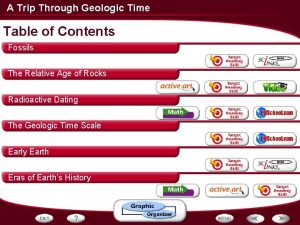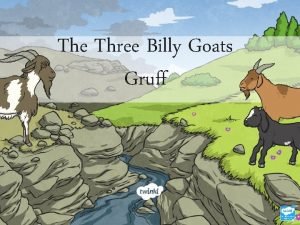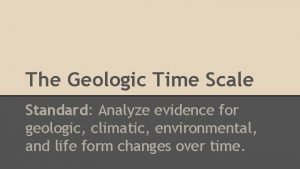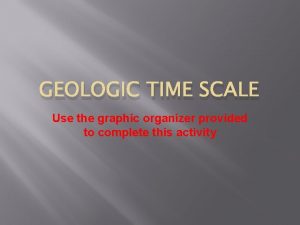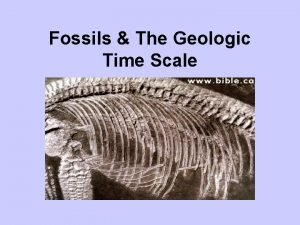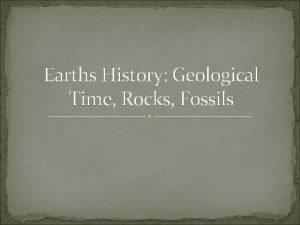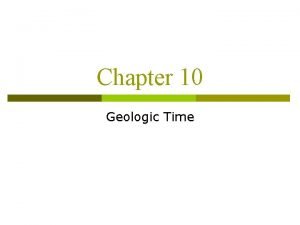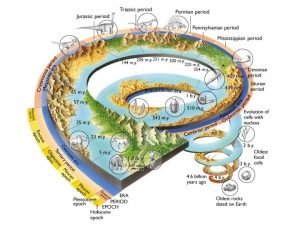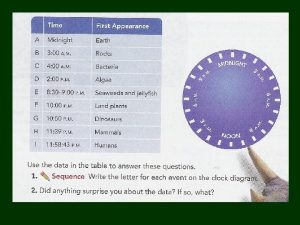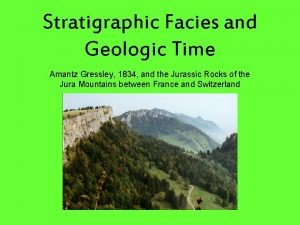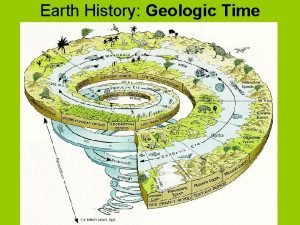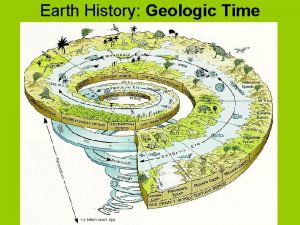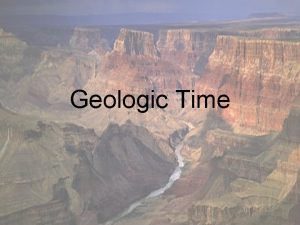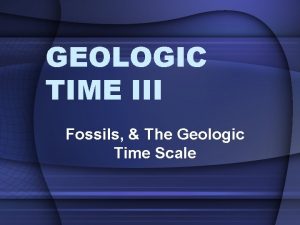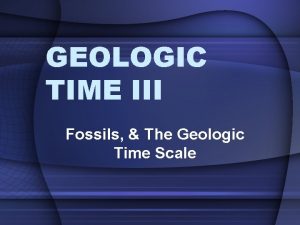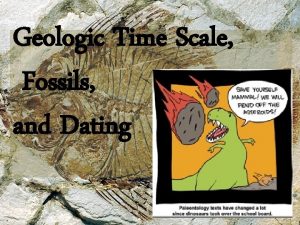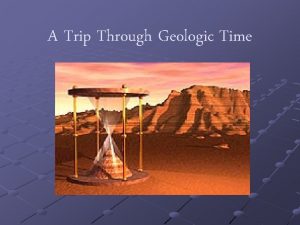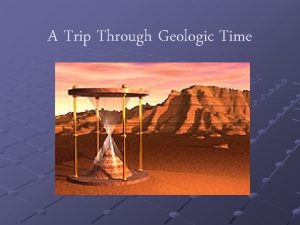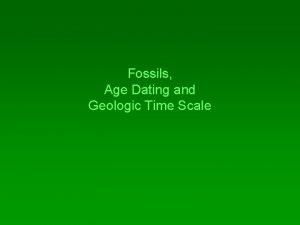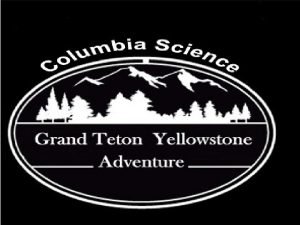A TRIP THROUGH GEOLOGIC TIME Fossils Fossils are














- Slides: 14

A TRIP THROUGH GEOLOGIC TIME: Fossils

*Fossils are preserved remains or traces of living things. *Most fossils form when living things are buried by sediments. *These slowly harden into rock and preserve the shape of the organism. *Scientists that study fossils are paleontologists.

*Fossils are usually found in sedimentary rocks. *When an organism dies, its soft parts often decay quickly, leaving only the hard parts to fossilize. *Ex: Bones, Shells, Teeth, or Seeds.

*PETRIFIED FOSSILS *KINDS OF FOSSILS. *Fossils where minerals replace all or part of the organism. ie: Petrified Wood *When the object is buried by sediment, water rich in minerals seeps into its cells; when the water evaporates, the minerals are left behind.

*MOLDS AND CASTS * A mold is a hollow area in sediment in the shape of an organism or part of an organism. *A cast is a copy of the shape of the organism. *KINDS OF FOSSILS. http: //www. classzone. com/boo ks/earth_science/terc/content/ visualizations/es 2901 p age 01. cfm

*CARBON FILM FOSSILS. *KINDS OF FOSSILS. *Carbon films are extremely thin coatings of carbon on rock that form when materials that make up an organism become gases and escape leaving only Carbon behind.

* TRACE FOSSILS. *KINDS OF FOSSILS. *Trace Fossils provide evidence of the activities of ancient organisms. For example – footprints, animal trails, or animal burrows

* PRESERVED REMAINS. *Preserved Remains are formed when an organism is preserved with little or no change *KINDS OF FOSSILS. For example when organism become trapped and preserved in tar, amber (tree sap), or ice

*WHY STUDY FOSSILS? *To learn what *To classify past life forms organisms in the order in which were like they lived *To prove extinct species existed!

*WHY STUDY FOSSILS? *All the information scientists have gathered is called the fossil record. *Shows how groups of organisms have changed over time. * Helps support the Theory of Evolution

One last thing… INDEX FOSSILS


*INDEX FOSSILS. *They *Scientists use index fossils to match rock layers. *MUST BE WIDELY DISTRIBUTED (spread out) and ONLY EXISTED BRIEFLY. are useful because they tell the relative ages of the rock layers they are found in.

*INDEX FOSSIL-THE TRILOBITE. *A group of hard –shelled animals whose bodies had three distinct parts. *Evolved more than 500 million years ago.
 A trip through geologic time answer key
A trip through geologic time answer key Compare geologic time with the geologic column.
Compare geologic time with the geologic column. Insidan region jh
Insidan region jh Billy once upon a time
Billy once upon a time How is the geologic time scale organized
How is the geologic time scale organized Earth's history and geologic time graphic organizer
Earth's history and geologic time graphic organizer How is the geologic time scale organized
How is the geologic time scale organized Geologic time scale animals
Geologic time scale animals Brainpop geologic time
Brainpop geologic time The longest subdivision of the geologic time scale is the
The longest subdivision of the geologic time scale is the 4 divisions of geologic time
4 divisions of geologic time Moth scale
Moth scale Geologic time
Geologic time Time scale
Time scale Geologic time scale
Geologic time scale
